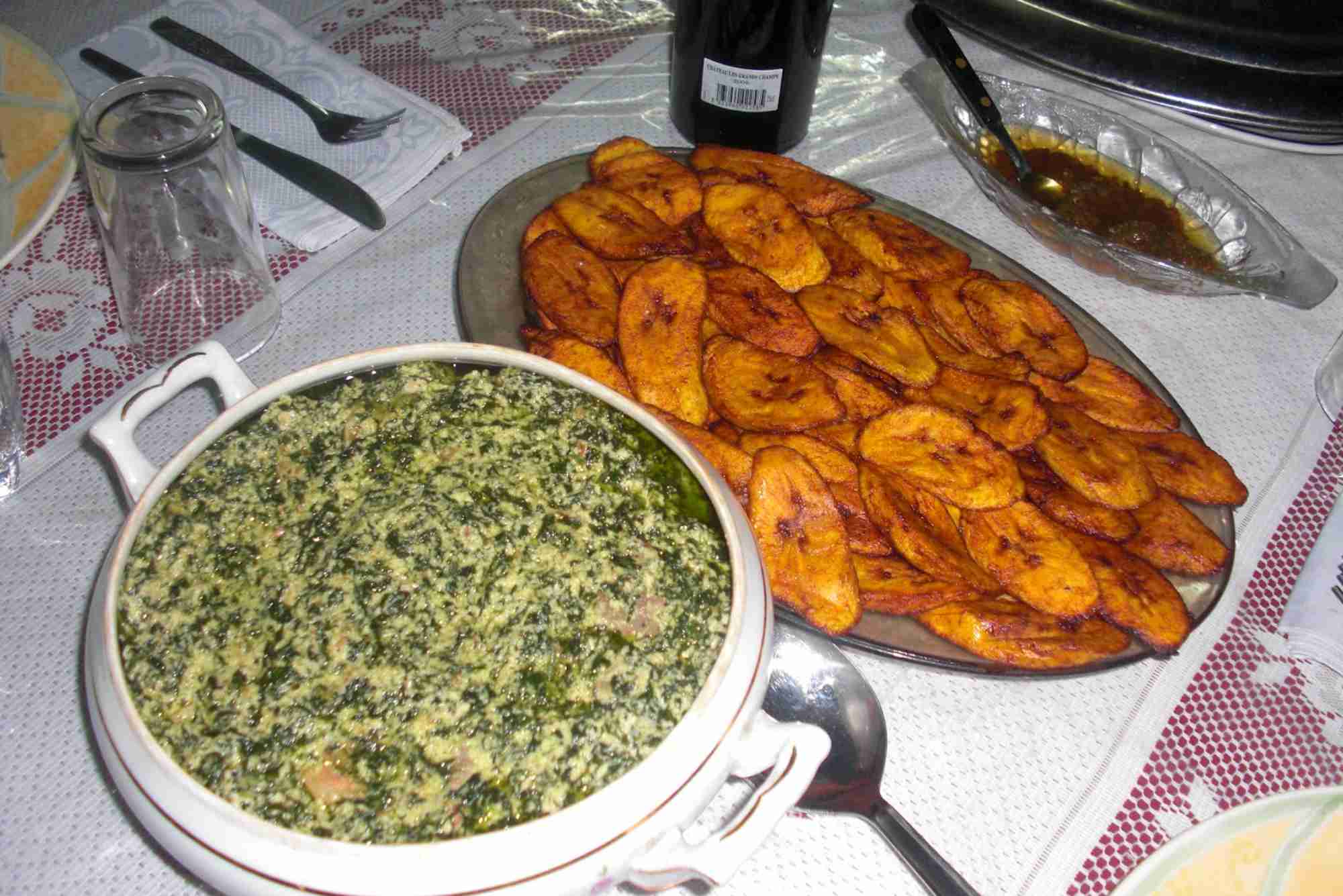Traditional Cameroon Foods You Need to Try
Food is the heartbeat of culture, and Cameroon is no exception. Known as “Africa in miniature,” Cameroon reflects the continent’s diversity through its landscapes, languages, and most deliciously—its food. Whether you’re traveling to Cameroon or exploring its cuisine from afar, tasting traditional Cameroon food offers a true journey into its heritage. From hearty stews to spicy grilled meats, Cameroonian dishes are full of bold flavors and local ingredients.
In this guide, you’ll discover the must-try traditional Cameroon foods, what makes them unique, and why they should be on every food lover’s bucket list.
Why Cameroon Food Is Special
Cameroon food is a flavorful fusion of Central and West African cooking traditions. The country’s diverse ethnic groups have influenced its cuisine with their own styles, ingredients, and preparation techniques.
Local markets offer a wide variety of produce, including cassava, plantains, cocoyam, maize, and spices. Cameroon also benefits from fertile soil and a tropical climate, which means fresh ingredients are always in abundance. This creates meals that are hearty, rich, and satisfying, often enjoyed with the entire family.
From the coast to the savannah, every region has its specialties, but they all share a deep respect for slow-cooked, seasoned food made from scratch.
The Role of Food in Cameroonian Culture
In Cameroon, food is more than sustenance—it’s a symbol of hospitality and identity. Meals are traditionally shared, often eaten by hand, and prepared in large portions for gatherings.
Certain dishes are tied to ceremonies and life milestones. For example, Ndolé is commonly served at weddings and festive events, while Koki is often prepared for family celebrations. Understanding Cameroonian culture means understanding the food traditions that bring people together.
Ndolé – The National Treasure
Perhaps the most famous traditional dish in Cameroon is Ndolé. This hearty stew is made with bitter leaves (similar to spinach), ground peanuts, and either beef, fish, or shrimp.
What makes Ndolé stand out is its rich texture and slightly nutty flavor from the peanut base. The bitter leaves balance the richness, creating a satisfying and nutritious dish.
Ndolé is typically served with boiled plantains, yams, or rice. It’s loved across the country and considered a national dish for good reason.
Eru – A Forest Delight
Hailing from the Southwest region, Eru is another green leafy vegetable dish that has won hearts nationwide. It’s cooked with waterleaf or spinach and often mixed with crayfish, meat, or cow skin (known locally as kanda).
Palm oil and local spices give Eru its bold flavor and slightly oily texture. This dish is traditionally eaten with garri (a dough-like food made from cassava) or fufu.
Its deep flavor and fibrous texture make it both comforting and filling—a staple of Cameroonian home cooking.
Achu Soup – The Yellow Sauce Wonder
Achu soup, also called “yellow soup,” is a traditional meal from the Northwest region. Made from cocoyam and served with a spiced yellow sauce, this dish is unlike anything else in Cameroonian cuisine.
The soup’s bright color comes from palm oil and limestone, mixed with local spices and meat broth. It’s often accompanied by various meats, including tripe and cow skin.
Achu is not something you’ll find in every restaurant, but it’s a dish that Cameroonians often prepare during special family gatherings.
Poulet DG – Chicken Fit for a Director
The name Poulet DG (Director General Chicken) says it all—this meal was originally reserved for the elite. It combines seasoned chicken with fried plantains, carrots, and green beans, all simmered in a tomato and onion sauce.
The dish is colorful, rich, and slightly sweet thanks to the plantains. It represents modern Cameroon food at its finest—traditional ingredients elevated to a gourmet level.
Today, Poulet DG is loved across all social classes and is a popular choice for dinner parties and special occasions.
Koki – The Cameroonian Bean Cake
Koki is a protein-packed dish made from ground black-eyed peas and red palm oil, wrapped in banana leaves and steamed. It’s often compared to Nigeria’s Moi Moi but has a softer texture and a bright orange color.
It’s commonly eaten with plantains or yams, and sometimes served as a vegetarian main dish. Koki is especially popular during holidays and traditional events in Western Cameroon.
Its simple ingredients and complex flavor make it one of the most authentic traditional Cameroon foods you can try.
Soya – The Ultimate Street Food
No conversation about Cameroon food is complete without mentioning Soya. This spicy grilled meat is usually beef, goat, or chicken, skewered and roasted over an open flame.
It’s coated in a fiery peanut-spice rub and served with onions, pepper sauce, and sometimes boiled plantains. Soya is more than just a meal—it’s an experience.
You’ll find Soya stands on nearly every street corner in cities like Douala and Yaoundé, especially in the evening. It’s a beloved late-night snack for locals and visitors alike.
Fufu and Njama Njama – A Perfect Pair
Fufu (a soft dough made from cassava, yams, or maize) is a common side dish across West and Central Africa. In Cameroon, it’s often served with Njama Njama, a sautéed green vegetable from the Northwest region.
The slight bitterness of Njama Njama is perfectly balanced by the neutral flavor of fufu. This pairing is not only delicious but also represents the everyday meals enjoyed by Cameroonian families.
Kondre – A Spiced Plantain Stew
Kondre is a traditional dish from the Western region of Cameroon, made by cooking ripe plantains with a mix of spices and meat, usually goat or beef.
The dish is slow-cooked until the meat is tender and the plantains soak up all the flavorful juices.
It’s spicy, aromatic, and often reserved for special events like weddings and naming ceremonies. Kondre reflects the Bamileke people’s love for deeply spiced food and communal eating.
How to Experience Cameroon Food Firsthand
To fully appreciate the diversity of Cameroon food, it’s best to try it at a local home or traditional restaurant. While international Cameroonian communities may offer some options abroad, the best flavors come from kitchens passed down through generations.
If you’re traveling to Cameroon, make a point to explore food markets and talk to locals about their favorite dishes. You’ll discover that each meal has a story—and every region brings something new to the table.
Health Aspects of Cameroonian Cuisine
One of the great things about traditional Cameroon food is its nutritional value. Meals are typically high in fiber, protein, and natural fats.
Vegetables, legumes, and fresh fish are commonly used, while processed ingredients are rare in home cooking. This makes Cameroonian food both flavorful and wholesome.
However, some dishes can be high in palm oil or carbohydrates, so moderation is key. Still, the majority of meals are made from scratch using organic ingredients, supporting both health and sustainability.
Frequently Asked Questions About Cameroon Food
What is the most popular food in Cameroon?
Ndolé is widely considered the national dish and is popular across all regions of the country.
Is Cameroonian food spicy?
Yes, many dishes use hot peppers and bold spices. However, spice levels can often be adjusted to taste.
What do Cameroonians eat for breakfast?
Common breakfast items include pap (fermented corn porridge), puff-puff (fried dough), and boiled plantains.
Is Cameroon food vegetarian-friendly?
While many dishes include meat or fish, vegetarian options like Koki, Njama Njama, and Ekwang are readily available.
Can I find Cameroon food outside Africa?
Yes, major cities like Paris, London, and New York have Cameroonian restaurants, especially in areas with large African communities.




